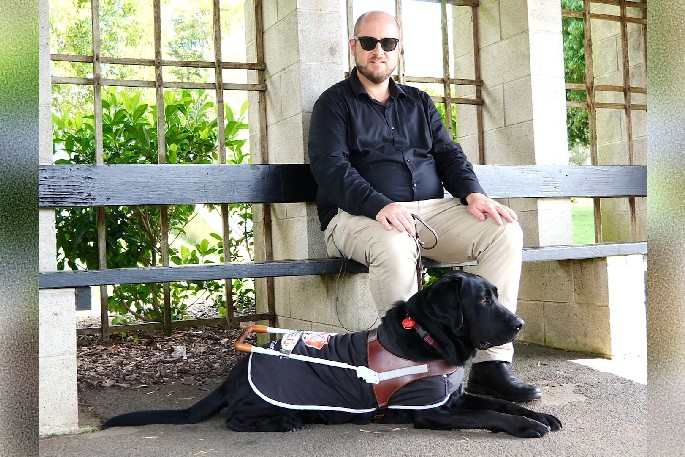This Content Is Only For Subscribers
Tourism in New Zealand is known for a wide range of unique experiences, but for blind and low vision travellers, often these experiences can remain frustratingly out of reach — not due to lack of desire, but because of how they are designed and delivered.
Dan Shepherd, general manager of community & inclusion at Blind Low Vision NZ, says that while New Zealand’s tourism sector is justifiably proud of its scenic offerings, the visual-centric nature of experiences often creates barriers for those who cannot rely on sight alone.
“Tourism experiences in New Zealand are often designed with a strong visual focus, celebrating the stunning landscapes and scenic beauty of Aotearoa. While this appeals to many, it can unintentionally exclude blind and low vision travellers when visual elements are not supported by adequate audio description or sensory alternatives,” he says. “As a result, there’s a prevailing expectation that local tourism experiences are not accessible, which discourages participation and reinforces exclusion. Changing this narrative requires a shift in mindset: accessibility must be seen as essential, not optional.”
He urges tourism operators to take a proactive and inclusive approach from the very beginning.
“Consider that disabled people travel, too! Designing accessible experiences opens doors to opportunities for tourism providers. The key is to engage people with lived experience and accessibility experts early in the design process. Their insights ensure that accessibility isn’t an afterthought, but a core part of the experience.”
For Nevé Billing, community awareness lead at Blind Low Vision NZ, the barriers go beyond infrastructure — they begin with basic access and extend into social interaction.
“I find that often popular spots are out of the city and not being able to drive means that I can’t access them,” she says. “Where I would usually take an Uber, it’s hard to know if I’ll actually be able to get an Uber to leave the spot.”
Once there, the challenges continue. “Accessible design often is not used – tactile ground surface indicators are not utilised, edges of steps/stairs are not marked, and signage is not visually accessible for low vision travellers,” Nevé says. “A common and frustrating barrier is the lack of disability awareness among frontline staff. Too often, blind or low vision visitors have to explain their needs just to access basic services or enjoy an experience. This puts an unfair burden on the individual and detracts from what should be an enjoyable outing.”
She believes inclusive design should never be a retrofit. “Accessible design should be a foundational part of tourism planning not an afterthought. By incorporating inclusive features from the beginning, operators can create environments that are welcoming and usable for everyone.” she says.
Key features she advocates for include tactile ground surface indicators, high contrast markings on steps, large print signage, and properly trained staff.
“Engaging accessibility experts and people with lived experience during the design phase ensures that these features are not only present but effective. Inclusive design benefits everyone — and makes tourism experiences more enjoyable, safe, and accessible,” she adds. “Consider how people can access the site from different distances and include detailed information about this on their website so visitors can make an informed decision.”
In addition, she encourages tourism providers to “provide training for staff on disability awareness and basics of how to support patrons with disabilities, provide sunflower lanyards for those with invisible disabilities and be well aware of the laws around service dogs.”
While examples of established accessible tourism are still making progress in New Zealand, international initiatives offer inspiration. Nevé highlights Japan as a global leader.
“Japan has many excellent examples! The Sumida River Park in Tokyo has tactile lines running all through the park so that white cane users can easily navigate all the different pathways. Osaka Castle has an elevator that is reserved for tourists with disabilities – but the stairs also have highlighted edges so I was able to use them if I wanted to.” she says.
Dan says that in New Zealand, accessibility is often achieved “not by design, but by accident,” pointing to the urgent need for purposeful action. Both agree that standardising inclusive features is critical if New Zealand wants to be truly welcoming to all visitors.
“For example,” Dan says, “high colour contrast for signage and digital interfaces to support people with low vision, clear wayfinding systems, quality audio descriptions, and well-trained staff all contribute to inclusive tourism. Embedding these elements into everyday practice not only improves accessibility but also creates a more welcoming and inclusive environment for everyone.”
To create lasting change, policy and regulation must support these aspirations. Dan points to Blind Low Vision NZ’s advocacy for mandatory Accessibility Standards and supporting legislation.
“Blind Low Vision NZ advocates for the implementation of robust Accessibility Standards and supporting legislation that embed inclusion into the core of tourism design and delivery. These standards should be mandatory across the industry, ensuring that accessible experiences are not optional extras but part of standard practice.”
“This covers everything from physical infrastructure and digital accessibility to staff training and service delivery. Not only does it uphold the rights of disabled people, but it also opens up valuable economic opportunities for tourism operators by tapping into a growing and loyal market.” he says
Nevé agrees, calling for “regulated standards for building and space design” and “minimum requirements for staff training when it comes to disability awareness.”
Both stress that inclusion is a shared responsibility — and the time to act is now.
“Inclusive tourism is good for everyone — and it should be the norm, not the exception,” says Dan



